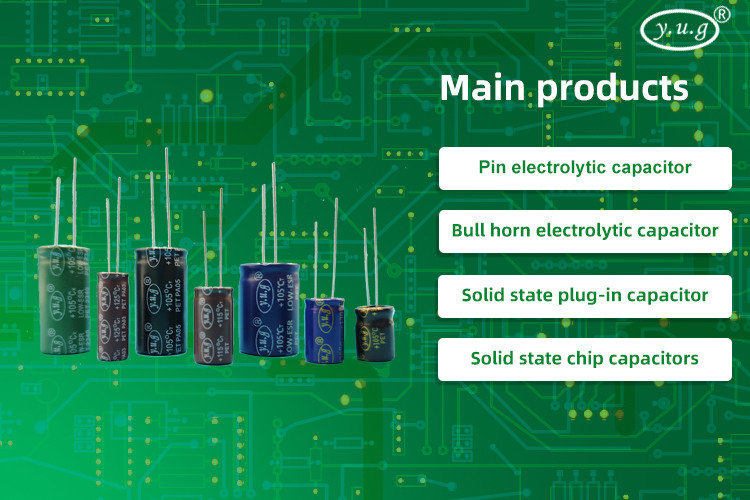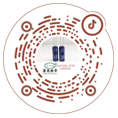Service hotline
+86-0755-89390538Growth opportunities for capacitor enterprises in the rapid development of the new energy industry
Growth opportunities for capacitor enterprises in the rapid development of the new energy industry
Recently, the State Council held an executive meeting and reviewed and passed the Decision of the State Council on Accelerating the Cultivation and Development of Strategic Emerging Industries. Seven industries, including energy conservation and environmental protection, new generation information technology, biotechnology, high-end equipment manufacturing, new energy, new materials, and new energy vehicles, will be focused on cultivation and accelerated. The meeting decided to increase policy support for the seven major industries, including finance, taxation, and finance, and establish a special fund for the development of strategic emerging industries. Compared to traditional industries, the seven major industries started relatively late. Currently, in the context of market hotspots becoming unsustainable, the seven major industries will undoubtedly become emerging hotspots, and hundreds of listed companies in their segmented fields are expected to benefit. Various support policies for national new energy vehicles are also being vigorously formulated. The known "Energy Conservation and New Energy Vehicle Development Plan (2010-2020)" shows in its draft that the central government will invest more than 100 billion yuan to develop the new energy vehicle industry. All industries are paying attention to the new opportunities that new energy will bring to their respective industries.
In the field of new energy and new energy vehicles, for the capacitor industry, it is not only a rare historical opportunity for upstream enterprises related to new energy control systems, power management systems, power inverters, and DC/AC switching systems, but also undoubtedly brings a rare development opportunity to the indispensable capacitor industry.
1、 New energy sector
New energy, also known as unconventional energy, refers to various forms of energy beyond traditional energy. Refers to energy sources that have just begun to be developed and utilized, or are actively being researched and awaiting promotion, such as solar energy, geothermal energy, wind energy, ocean energy, biomass energy, and nuclear fusion energy.
Nowadays, the country is vigorously promoting the use of wind and solar energy, which are clean energy sources. So now more and more companies are designing power management systems for solar and wind power generation, and there is a great demand for high voltage and large capacitance capacitors when selecting products. For example, in a wind energy product system, capacitors are used in three areas. The first option is to use thin film capacitors for high voltage absorption applications; Another one is DC-LINK, which plays a filtering and energy storage role during the DC-DC conversion process; When connected to the grid, there are also anti-interference capacitors. As shown in Figure 1.
It should be noted that among these three types of capacitors, DC-LINK capacitors are generally the most concerned. Generally, users have two types of capacitors to choose from. The first is aluminum electrolytic capacitors, especially in DC-DC conversion units, which have a working voltage of 690 volts and a capacity of 3300 to 4700 uF. These are only applications in low-power wind energy systems. The number of capacitors used in high-power units will also increase exponentially.
The maximum withstand voltage of aluminum electrolytic capacitors is generally 450V (but currently Jianghai has developed a maximum withstand voltage of 600V), so how to use it at the voltage value of 690V? At least two aluminum electrolytic capacitors need to be connected in series to achieve a voltage resistance of 900 volts and meet the requirement of more than 690 volts. Generally, for voltage stabilizing and filtering capacitors like this, if aluminum electrolytic capacitors are used, many aluminum electrolytic capacitors need to be connected in series or parallel to achieve a large capacity value and high voltage resistance. Thin film capacitors can also be used in DC applications. The capacity value of thin film capacitors is the same as that of aluminum electrolytic capacitors, but their withstand voltage can directly reach 690 volts, without the need for series or parallel connection to meet the requirements of withstand voltage.
How to choose aluminum electrolytic capacitors and thin film capacitors? Should aluminum electrolytic capacitors or thin film capacitors be used in identical application scenarios? The future trend will definitely be to mainly use thin film capacitors, and the benefits of using thin film capacitors include the following four aspects:
1. Aluminum electrolytic capacitors are liquid capacitors, which first have a lifespan limit. Many end-users of solar and wind energy products now have a lifespan requirement for the product, which must be greater than 15 years. The product must be reliable within 15 years because the maintenance cost of wind energy products is very expensive and difficult. Thin film capacitors are solid capacitors that can precisely meet this usage requirement. Aluminum electrolytic capacitors have the volatilization of electrolyte materials, and generally cannot reach a 15 year service life. To achieve a 15 year test life, it means that they need to be replaced two to three times during this period.
The second advantage is that due to the characteristics of the dielectric material of thin film capacitors, their ESR value is low, resulting in very low heat generation. In addition, they can also achieve high resistance to ripple voltage.
3. The third characteristic is that it has a wider temperature range for use, which is also the difference between liquid capacitors and solid capacitors. Thin film capacitors have excellent stability when working at low temperatures.
4. The filtering ability of thin film capacitors is many times stronger than that of aluminum capacitors. If the filtering is good, thin film capacitors can be used for higher conversion efficiency. This is the current trend in the development of wind and solar energy applications. Therefore, it is necessary for Nantong Jianghai Capacitor Co., Ltd. to make investment decisions in the field of thin film capacitors in the future, and it is also a growth point that will inevitably bring profits in the near future.
In addition, in the application of solar energy, due to the fact that supercapacitors can charge and discharge hundreds of thousands of times or more, their lifespan characteristics are far superior to other battery products. This can solve the concern of maintenance free, especially in high altitude and enclosed conditions. Therefore, supercapacitors are often used as energy storage devices to replace traditional lead-acid batteries. The charging lifespan of traditional lead-acid batteries is generally around 500 times. For example, solar street lights and traffic signals have examples of applications.
Of course, in addition to bringing market demand for high-voltage, high-capacity electrolytic capacitors, thin film capacitors, and supercapacitors, the new energy industry will also bring new growth in demand for other conventional capacitors. In the field of new energy, besides the examples given by the author, there are countless specific cases of application in other occasions.
2、 The field of new energy vehicles
The latest news is that at the fourth United Nations Climate Negotiations Conference of this year, which opened in Tianjin on October 4th, the Ministry of Science and Technology released a report titled "Clean Energy Technology in China's Development in 2010", proposing that China will promote and apply 20000 new energy vehicles in the field of public transportation by the end of this year.
This report points out that the Chinese government has vigorously developed new energy vehicles as one of the strategic emerging industries. In 2009, the first batch of 13 demonstration cities for the "Ten Cities and Thousand Vehicles" project took the lead in promoting the use of new energy vehicles in public services such as public transportation, rental, official services, environmental sanitation, and postal services. As of the end of 2009, nearly 5000 new energy vehicles of various types were demonstrated and promoted nationwide, and more than 70 new products were put into the market.
The demonstration project has effectively stimulated the investment of private capital in power batteries and drive motors. By 2011, it can form a production capacity of 150000 vehicles and key components.
This report also clearly points out that by the end of 2010, China's "Ten Cities, Thousand Vehicles" demonstration project will promote the application of more than 20000 domestically produced new energy vehicles in the field of public transportation, driving the market application of more than 150000 vehicles. In 2015, the number of new energy vehicles in China will develop to over 1 million, and by 2020, the market size of new energy vehicles will reach tens of millions, achieving the technological strategic transformation of China's automotive industry.
The power integration system for electric vehicles is a high-tech intensive product that involves multiple technical and industrial fields, and is also the core technology of electric vehicles and the focus of industrial competition. Through more than a decade of key national support, although China has made significant progress in key technologies and product research related to electric vehicle motors and drive systems, battery systems, and charging technology equipment, there is still a significant gap in performance compared to foreign system integration products.
As a part of this industry, capacitors are used in the following aspects:
1. Charger (pile) and charging station system
Due to the active involvement of industry giants such as AVIC Group, State Grid Corporation of China, Southern Power Grid, PetroChina, and CNOOC, the heat of China's energy-saving and new energy industries has been raised to an unprecedented level, undoubtedly playing an important role in the development of new energy vehicles in China. At the same time, co building a charging station system with the existing petrochemical supply system is not only convenient, but also more cost-effective, which plays a more positive role in the popularization of charging stations and electric vehicles.
There are currently four charging options available:
1) Battery replacement plan: Supported by Nissan, Ankai Bus, and CRRC Times
2) Plug in charging scheme: SAIC and BYD support this scheme
3) Hybrid solution: Supported by General Motors, Toyota, Ford, and Volkswagen
4) Extended range plan: The main support for this plan is from several well-known foreign brands
Regardless of the above solutions, they will always be based on AC-AC, AC-DC, DC-DC, and DC-AC conversion technology platforms. In the filtering process, electrolytic capacitors are essential components. It should be particularly pointed out that in low-voltage DC-DC conversion systems, solid-state electrolytic capacitors are also the preferred and preferred device, because solid-state capacitors have characteristics such as low ESR, long lifespan, and wide temperature range, making them particularly suitable for outdoor low-temperature operation in the north. Some charging systems also use auxiliary unit systems, such as EPS/UPS, high-voltage frequency converters, and high-voltage switching power supply systems, which are traditional markets in the capacitor industry.
2. Electric vehicle power management system
As a management system for power batteries, in addition to managing various battery pack power sources, it is also necessary to manage the output of the power supply, including the management of the power supply for automotive control auxiliary units. Some system designs also need to consider the compensation and absorption of uphill and downhill energy, etc. As an on-board electronic component, it has many characteristics of environmental uncertainty, so it will have more stringent requirements.
In hybrid systems, some energy compensation and absorption schemes use supercapacitor banks for energy storage. Therefore, there will be a great demand for supercapacitors with super large capacity, and the Shanghai World Expo electric vehicle is a good example of application. Meanwhile, as the rapid growth and industrialization of ultra large capacity supercapacitors, the development of the electric vehicle industry will play a certain role in boosting the momentum.
epilogue
The development of new energy and new energy vehicles is undoubtedly a new energy revolution, marking the peak of emerging industries and industrial transformation, bringing opportunities and challenges to various related industries. The capacitor industry, as a supporting basic electronic component, also brings many development opportunities, especially high-voltage and high-capacity aluminum electrolytic capacitors, solid-state aluminum electrolytic capacitors, thin film capacitors, and supercapacitors, which will bring significant development opportunities.

 Chinese
Chinese English
English










 WeChat
WeChat
